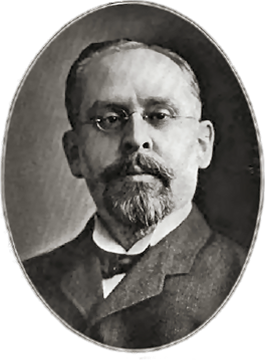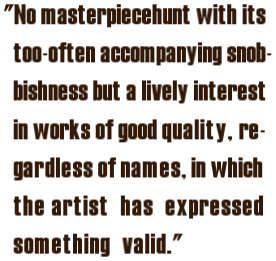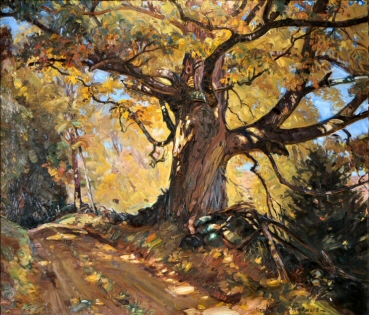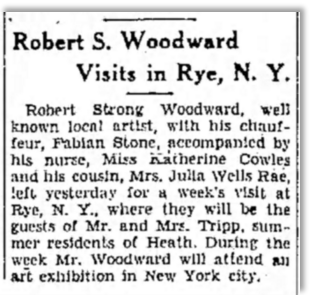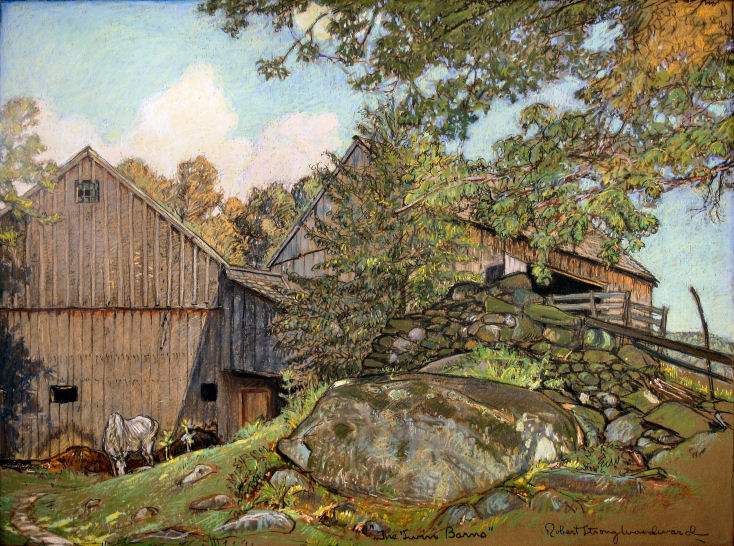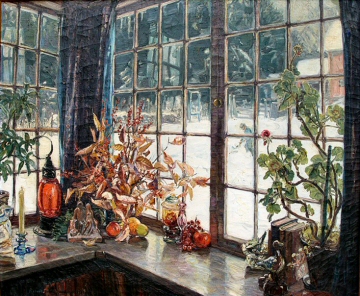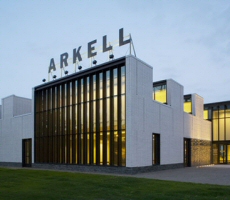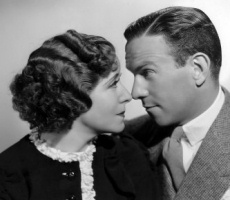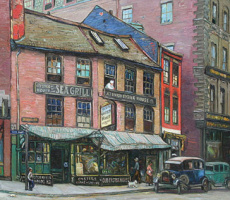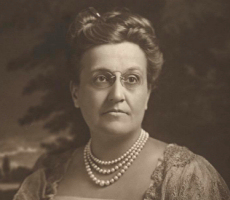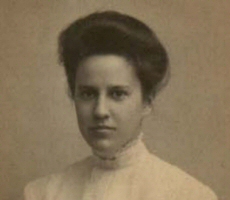Mrs. Josephine Pettingill Everett
Philanthropist & Patron of the Arts
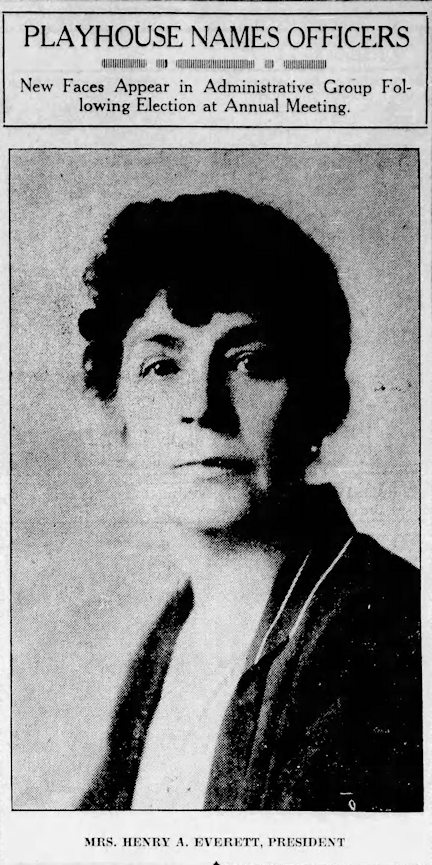
 The only photograph of Mrs. Everett
The only photograph of Mrs. Everett
we could find after and exhaustive search.
Published in the Pasedena Evening Post
June 22, 1928. She is 62 year old in the clip.
New Information and Pictures for Mrs. Everett: 11 / 10 / 2020
If there has ever been a person who epitomizes the very definition of an avocation, such as, patron of the arts, it is Josephine Everett. She made the arts her life's work. She is one of many women during her era that worked tirelessly to support programs that provided community enrichment through programs that gave access to the arts available to the public. In a quote used by Historian Candice Campbell in, A Brief History of The Shakespeare Club, from the U.S. Department of the Interior claims, "Literary and musical societies were founded as far back as the 1870s in the settlers' attempts to create a civilized and cultural setting for their frontier town." A taming of the west if you will. But Mrs. Everett was not a frontierswoman. Pasadena was a summer home until the death of her husband in 1917 by which she then became a permanent resident. Everett's propensity for philanthropy most likely came from her father who was a founding member of Cleveland's "Cleveland Society for the Prevention of Cruelty to Animals" in the 1870s and later evolved to one of the Humane Societies in the country adding the protection of children and mothers to the scope of services.
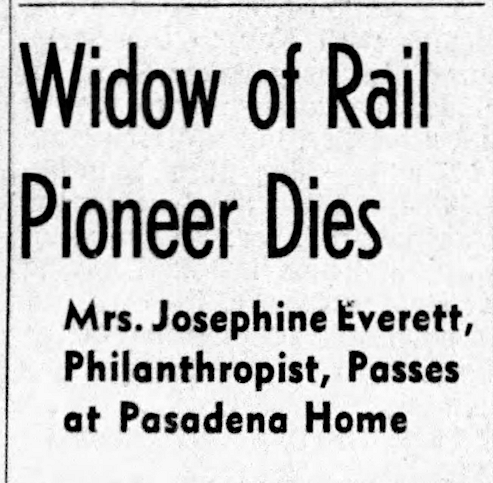
 Josephine Everett's Obituary
Josephine Everett's Obituary
Los Angeles Times
July 5, 1937
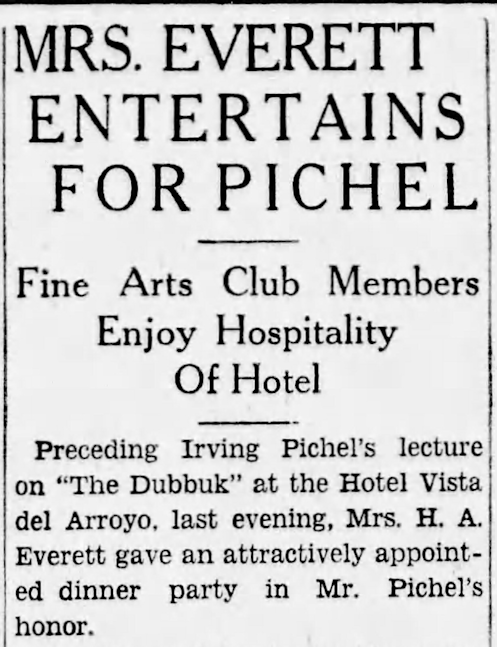
 Pasadena Evening Post,
Pasadena Evening Post,
January 22, 1929
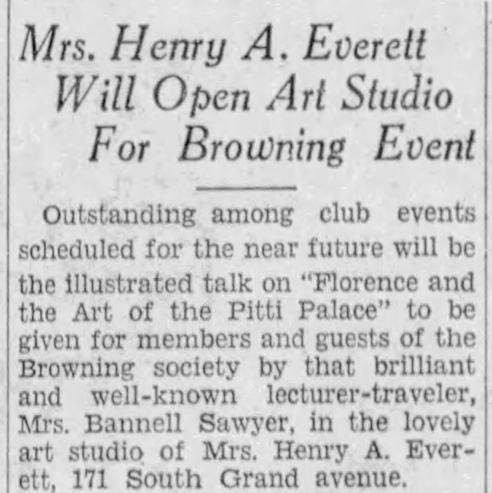
 Pasadena Evening Post,
Pasadena Evening Post,
February 23, 1931
In her obituary, the Los Angeles Times says of Mrs. Everett, "Southern California lost one of its outstanding woman philanthropists, yesterday when Mrs. Josephine P. Everett, widow of Henry A. Everett, pioneer street railway developer, died at her residence. 171 South Grand Avenue, Pasadena. She had been ill for more than a year." She is credited with being one of the founders of the Hollywood Bowl giving a check to purchase the land where the bowl now resides. She once was the president of the Pasadena Community Playhouse Association. She sat on various boards of organizations, including those of the Los Angeles Philharmonic Orchestra, Pasadena Civic Orchestra. As a member of the Athenaeum and California Institute Associates, she was an important supporter of CalTech and education itself. As a collector of books concerning women and women's history, her collection was gifted to the Huntington Library in 1936 forming the core of its holdings in women's studies. More than a collector of art she often lent her prizes to many different groups throughout the Southland (the term used to refer to the 5 southern counties of Southern California).
Her obituary also claims that she had sponsored many artists. Three of which had won International honors and recognition. Though there is no evidence she ever "sponsored" Woodward, she was undoubtedly a patron having purchased 9 known works throughout his career. Yet, we feel obliged to also consider her, at the very least, an advocate of his work, twice lending pieces as part of exhibitions at the Los Angeles Museum of Fine Arts. But there was also a personal relationship between the two. Woodward twice would make the trip to New York City when she was in town. Once was to accompany her to the annual National Society of Watercolorist Exhibition and another (1932) where Woodward met her at her hotel and stayed to dine with her. We are not certain how the two met, however, we believe they met through Woodward's father, Orion, a land developer, who arrived in Los Angeles in 1906 and spent the next 21 years of his career in the area before retiring back to his home in Massachusetts. Orion's career path (and projects) appears to follow the work of one of Los Angeles County's most prolific and well-known developers Henry E. Huntington.
Though Huntington is best known as a developer (the Huntington neighborhood of Los Angeles, Redondo Beach, and Glendale, CA) his original wealth came from the same career path as Mrs. Everett's husband, (interurban electric railways). A little know fact about these railways was they rarely ever made money. They were built for two purposes, (1) to provide a corridor to deliver electric power to sparsely populated areas and (2) to make those areas now attractive to land development. In fact, Huntington was the owner of the Pacific Electric Railway that operated the Alpine Railway to the top of Mount Lowe which we believe Woodward and his friends rode back to Los Angeles the morning of his 1906 accident. Henry Everett is tied to numerous interurban railways throughout the country - Detroit and Seattle just to name a couple. We have never found a concrete link between Huntington, Everett, and Woodward's father. Mr. Everett is often cited as a "financier" in regard to his life in California, suggesting he financed projects and was nothing more than an investor. However, Huntington also had many investors in his projects and they are not always listed in their entirety. We just believe all of the coincidences among the three men are too frequent to overlook.
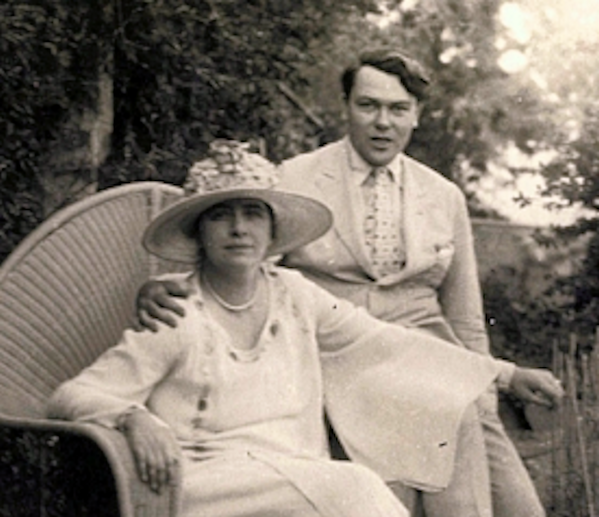
 Everett's daughter, poet, Leolyn Louis Spelman
Everett's daughter, poet, Leolyn Louis Spelman
with her husband, musician, Timothy Mather Spelman
HER LEGACY; Seemingy Lost, Lives on in Spirit
Mrs. Everett and her husband had two daughters, poet Leolyn Louis and Dorothy Burnham whose is the namesake of the Everett Collection housed in the Cleveland Museum of Fine Arts (The Dorothy Burnham Everett Collection). Leolyn Louis, who married music composer Timothy Mather Spelman, published two books of poetry that we could find - "The Other Book," and "The Sleep-book." Leolyn began her literary career as a poet writing for Life Magazine and enjoyed some success in being published. We could not find anything regarding Dorothy and suspect that she may have died young prompting her mother to honor her brief life by naming the family collection after her. Leolyn and Spelman did not have any children and we believe that the family line ended with her death in 1971.
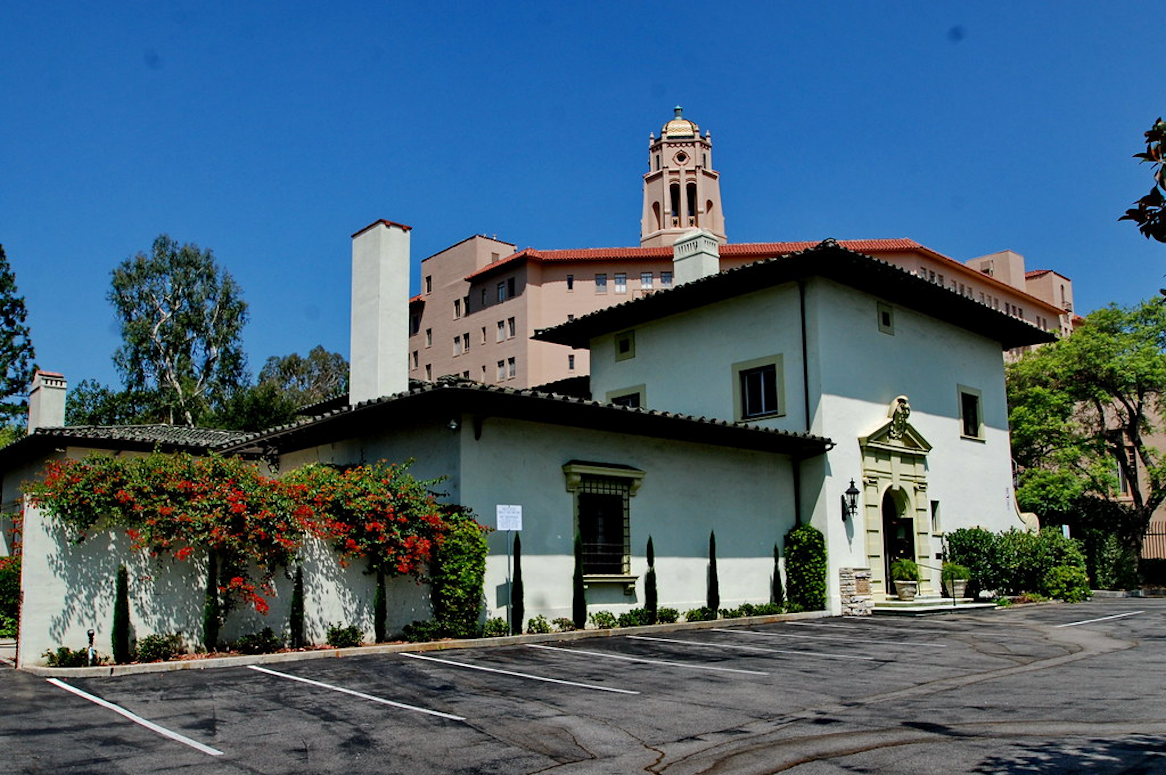
 The Everett House Pasadena, CA. Today it is home to
The Everett House Pasadena, CA. Today it is home to
The Shakespeare Club of Pasadena. It was purchased buy the
club in 1971. Since Everett's death, the house was used by the
U.S. Government in 1942 for data processing and after the war
converted to a lab for the Jet Propulsion Laboratory research.
The Everett home on South Grande Avenue, just off of millionaire's row in Pasadena, is an Italian-styled Villa designed by the well-known architectural firm Marston, Van Pelt & Maybury. Its features included a large music room and art gallery by which Mrs. Everett hosted numerous concerts, musicals, and other events. After her death, the house was used by the U.S. Government during the war as a data-computing center for plane spotting. The house was later purchased by CalTech's Jet Propulsion Laboratories and fashioned to carry out research and development. In 1966, the home was purchased by Lily Crain, widow of musician Hal D. Crain the former Director of the Hollywood Boys Choir, to be used as a private residence and music conservatory. Mrs. Crain was unable to fulfill her intentions for the home and had to let it go. She would pass in 1979.
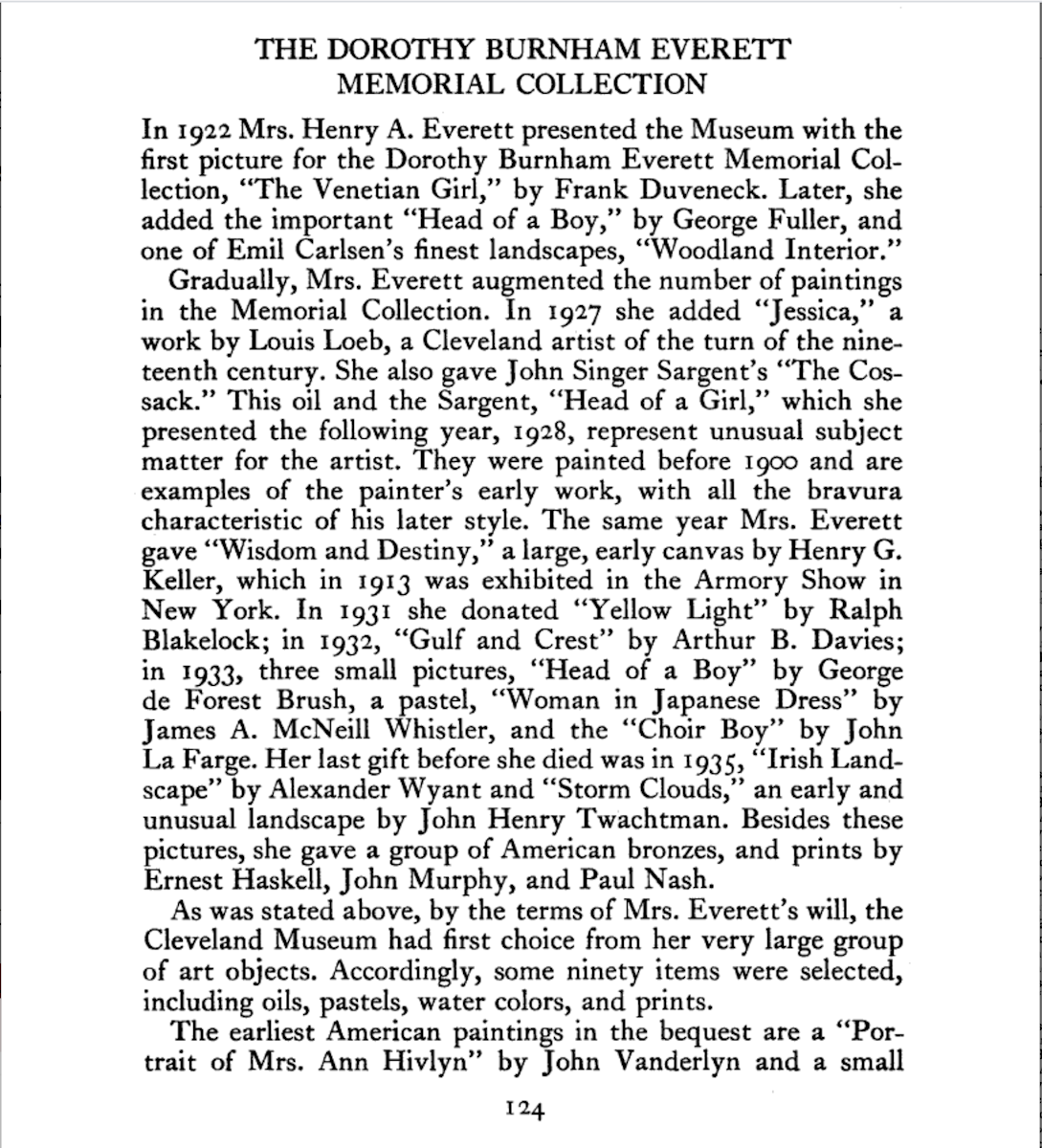
 The image above is a screen capture
The image above is a screen capture
of an article published by The Bulletin of
the Cleveland Museum of Art regarding the
Everett Collection - Vol. 20, No. 1, Jan., 1933
Here is another - Vol. 25, No. 6, Jun., 1938
In 1971 the Everett House was bought by The Shakespeare Club when they found themselves in need of a new clubhouse. The Shakespeare Club, founded in 1888, is the second oldest "women's club" in the Greater Los Angeles area. It originated as a book club where women gathered to read and study writing and literature. The Club's namesake being the first subject of study, William Shakespeare. We could not find any evidence pointing to Mrs. Everett's involvement with the club in its history, yet we find it hard to believe she did not at least know of them and perhaps participated in some activity. It would seem like an ideal organization for her interest. The Villa itself would make a perfect clubhouse for an organization that evolved over decades to concerts, educational programs, theatrical productions, exhibitions, and lectures.
Investigating what remains of Mrs. Everett's vast collection of art and antiquities just the Dorothy Burnham Everett Collection housed in the Cleveland
Museum of Fine Art remains intact. Most of her collection that went to the Pasadena Museum of Fine Art and the San Diego Museum of Fine Art has been dispersed most likely through consolidations and re-organization of
several museums. Many of the works sold off and are now in private collections. However, in what is sometimes a blend of both fate and destiny, the spirit of Josephine Pellingill Everett's living legacy goes on and is in fact thriving
through the home she built specifically to be a center of arts.
For more on the history of The Shakespeare Club of Pasadena visit this page and be sure to open the PDF booklet written by Candace L. Campbell
The Original Story of Mrs. Henry Everett, first published 10 / 25 / 2017
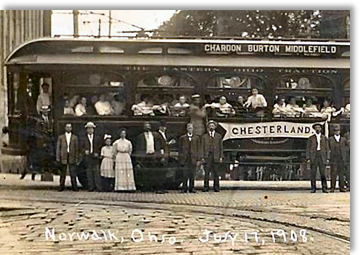
|
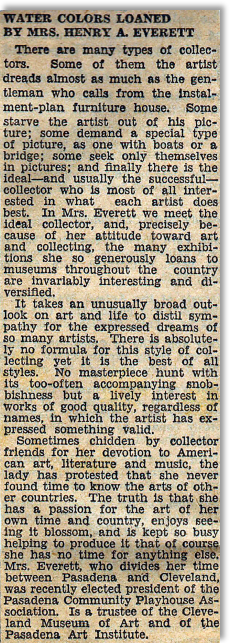
|
Known works purchased
▸ My Winter Shelf |

